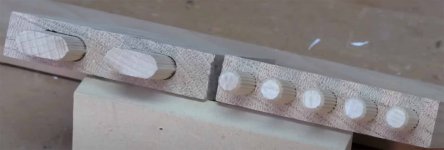Packard
Member
Has anyone come across a chart that lists the strength of glue bonds based on the square inches of glue area?
Not to get into discussions on various joinery methods, I would like to know if I just pressed two pieces of face grain to face grain lumber together, how much strength I would get from 1 square inch of glue area. 1/2” and 2”, etc.
All the tests on joint strength are basically a test showing which joint has the most glue area. But where is the test that shows the glue area to strength relationship?
Not to get into discussions on various joinery methods, I would like to know if I just pressed two pieces of face grain to face grain lumber together, how much strength I would get from 1 square inch of glue area. 1/2” and 2”, etc.
All the tests on joint strength are basically a test showing which joint has the most glue area. But where is the test that shows the glue area to strength relationship?

